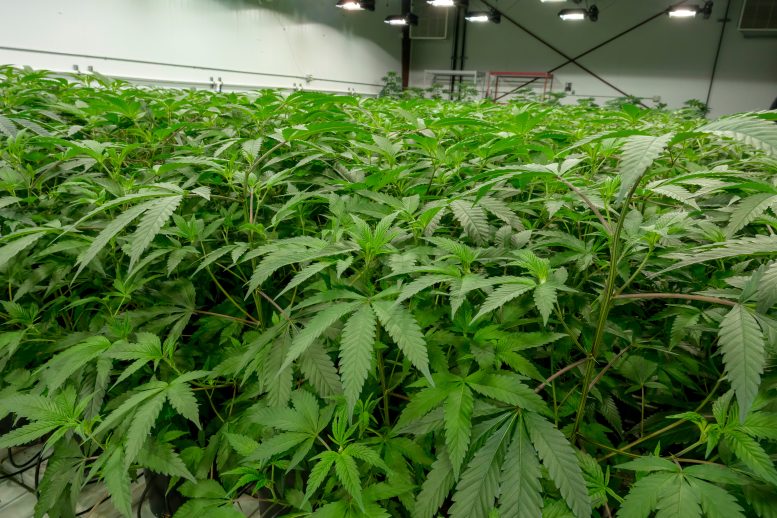
Research from the University of Arizona Health Sciences shows that Cannabis sativa terpenes are as effective as morphine in treating chronic pain and have fewer side effects. Combined with morphine, they offer enhanced pain relief, presenting a promising alternative to opioids with lower addiction risks. Future studies will focus on potential combination therapies to optimize pain management.
Researchers at the Comprehensive Center for Pain & Addiction conducted tests on five terpenes, finding promising results in their pain-relief capabilities.
A study from the University of Arizona Health Sciences, published in the journal PAIN, discovered that terpenes from Cannabis sativa were as effective as morphine in alleviating chronic neuropathic pain. Additionally, combining these two analgesics improved pain relief without negative side effects.
Some prior studies have shown that the Cannabis sativa plant and its two primary cannabinoids, tetrahydrocannabinol, or THC, and cannabidiol, or CBD, can be effective in managing chronic pain; however, the effects are generally moderate and can come with unwanted psychoactive side effects. Terpenes, the compounds that give plants their aroma and taste, offer an alternative path to pain relief without adverse side effects.
“A question that we’ve been very interested in is could terpenes be used to manage chronic pain?” said lead researcher John Streicher, PhD, a member of the Comprehensive Center for Pain & Addiction and a professor of pharmacology at the College of Medicine – Tucson. “What we found is that terpenes are really good at relieving a specific type of chronic pain with side effects that are low and manageable.”

John Streicher, PhD, is a member of the University of Arizona Health Sciences Comprehensive Center for Pain & Addiction and a professor of pharmacology at the College of Medicine – Tucson. Credit: Noelle Haro-Gomez, University of Arizona Health Sciences
Research on Terpenes
Terpenes are found in all plants, and most plants have two dominant terpene species. Cannabis is unique in that it contains up to 150 terpenes with multiple terpenes acting as the dominant species. Streicher and the research team tested five terpenes that are found in moderate to high levels in Cannabis: alpha-humulene, beta-caryophyllene, beta-pinene, geraniol, and linalool.
In a prior study, Streicher’s team found that four of those terpenes mimicked the effects of cannabinoids, including a reduction in the sensation of pain, in animal models of acute pain. For this study, they used a mouse model of chemotherapy-induced neuropathic pain, a type of chronic pain that occurs when highly toxic chemotherapy medications cause nerve damage that results in pain.

Cannabis sativa is unique in that it contains up to 150 terpenes with multiple terpenes acting as the dominant species. Credit: Noelle Haro-Gomez, University of Arizona Health Sciences
The terpenes were tested individually and compared with morphine. The research team found that each terpene was successful in reducing the sensation of pain at levels near to or above the peak effect of morphine. When the terpenes were combined with morphine, the pain-relieving effects of all five terpene/morphine combinations were significantly increased.
“That was really striking to us, but just because something relieves pain doesn’t necessarily mean it’s going to be a good therapy,” Streicher said.
Comparing Terpenes and Opioids
Opioids are often used to treat many types of pain, but they can come with a host of unwanted side effects. Opioids activate the brain’s reward system, which is what can lead to addiction, and can cause tolerance, a condition that occurs when the body gets used to a medication and needs increasingly larger doses to have the same effect. Opioids also can cause respiratory depression, which can lead to death.
“We looked at other aspects of the terpenes, such as: Does this cause reward? Is this going to be addictive? Is it going to make you feel awful?” Streicher said. “What we found was yes, terpenes do relieve pain, and they also have a pretty good side effect profile.”
None of the terpenes had reward liability, making them a low risk for addiction. Some of the terpenes also did not cause aversive behaviors, which suggests they could be effective therapeutics without producing distressing side effects.
Finally, researchers tested different routes of terpene administration: injection, oral dosing, and inhalation of vaporized pure terpenes. They found that when terpenes were given orally or inhaled, the effects were significantly reduced or absent.
“A lot of people vape or smoke terpenes as part of cannabis extracts that are available commercially in states where cannabis use is legal,” Streicher said “We were surprised to find that the inhalation route didn’t have an impact in this study, because there are a lot of at least anecdotal reports saying that you can get the effects of terpenes whether taken orally or inhaled. Part of the confounding factor is that terpenes smell quite nice and it’s hard to disguise that aroma, so people could be kind of having the psychosomatic placebo-style effect.”
Because this is the first paper to examine the side effects of terpenes, Streicher will be using its findings to inform the next stage of research – can terpenes block the reward potential of an opiate such as morphine while at the same time enhancing its pain-relief potential?
“This brings up the idea that you could have a combination therapy, an opioid with a high level of terpene, that could actually make the pain relief better while blocking the addiction potential of opioids,” Streicher said. “That’s what we are looking at now.”
Reference: “Terpenes from Cannabis sativa induce antinociception in a mouse model of chronic neuropathic pain via activation of adenosine A2A receptors” by Abigail M. Schwarz, Attila A. Keresztes, Thai A. Bui, Ryan A. Hecksel, Adriana Peña, Brianna A. Lent, Zhan-Guo Gao, Martín A. Gamez-Rivera, Caleb A. Seekins, Kerry A. Chou, Taylor L. Appel, Kenneth A. Jacobson, Fahad A. Al-Obeidi and John M. Streicher, 2 May 2024, PAIN.
DOI: 10.1097/j.pain.0000000000003265
The study was funded by the National Institutes of Health and the National Institute of Diabetes and Digestive and Kidney Diseases.









I’ve done extensive research as well as selling in the past during the CBD boom, custom CBD isolate designs based on the customer’s needs. We had obviously a specific one for pain which included the five listed above as well as what worked best for me and still works best for me that wasn’t even listed. Myrcene.
Can you tell me how to get affordable custom terpene blends? Can I do it myself with essential oils?
I have degeneration in my disks in my whole body and now the low back disk have crushed and are compressed into the spinal cord,the pain is excruciating, where can I find this specific kind of strain you are talking about? I would be grateful since I have dealt with pain over thirty years now
HI,Marie
Would you Add me to the respondent list for information regarding your request.
RJC